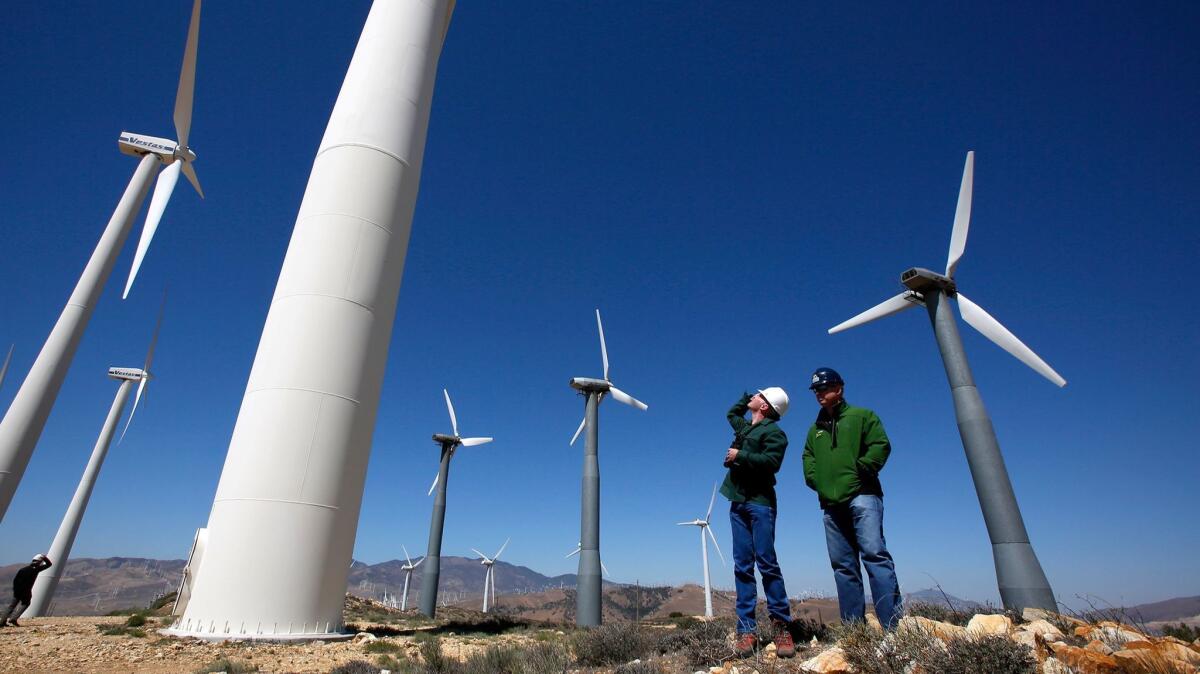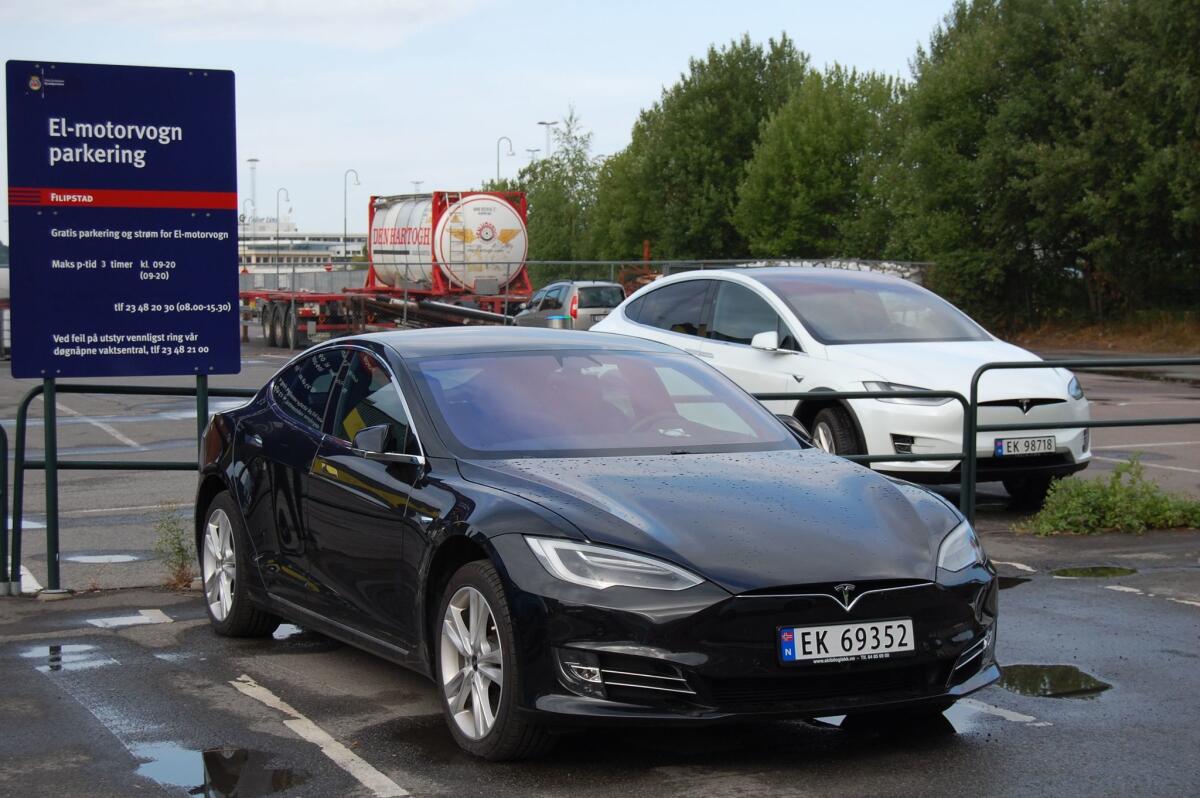Here’s how 6 countries are stepping up to meet the Paris climate goals

- Share via
World leaders are gathering in New York for Monday’s Climate Action Summit. The summit’s goal, according to United Nations Secretary-General Antonio Guterres, is to encourage countries to get serious about climate change.
“Don’t come with a speech,” Guterres has warned. “Come with a plan.”
So far, international efforts have fallen short. Four years after the Paris climate accord was inked, countries’ promises to reduce greenhouse gas emissions remain too weak to meet the agreement’s goal of limiting global warming to “well below” 2 degrees Celsius. By the end of the century, temperatures are expected to rise by 3.2 degrees compared to preindustrial times if current policies aren’t strengthened, according to a new estimate from the Climate Action Tracker.
But that doesn’t mean countries haven’t made any progress. A handful of nations have managed to drive down their emissions — and some have made great strides in specific areas.
Now, experts say, it’s time for everyone to up their game when they submit their next round of climate commitments in 2020. (You can follow the latest Paris pledges at the World Resources Institute’s Climate Watch.)
As the summit kicks off, here’s a look at six countries that have already taken meaningful action on climate change, and how they did it.
India
India ranks second in the world in population and third in greenhouse gas emissions (fourth if you count the European Union as a single country). But it is also at the top of two other lists: it is one of the few countries on track to fulfill its climate pledge under the Paris agreement, and one of fewer still whose commitment is consistent with holding warming to 2 degrees C.
Much of India’s success is due to its enthusiastic embrace of solar energy.

In 2010, the country established the National Solar Mission, which set out to add 20 gigawatts of solar capacity by 2022. The country surpassed that goal back in 2018 and is now set to exceed its Paris pledge to supply 40% of the nation’s energy needs with non-fossil-fuel power by 2030.
India accomplished this by implementing a range of pro-solar policies, like mandating that utilities purchase solar energy, and by launching programs to expand off-the-grid solar power, bringing electricity to many villages in the process.
Plummeting prices for solar panels have greased the wheels, as has the low cost of labor in India. The government also helped by auctioning off contracts, creating competition among developers. These factors have combined to make India’s solar power the cheapest in the world.
India has more work to do, experts say. Most of its electricity still comes from coal-fired plants, and the country continues to commission new ones, albeit fewer than it planned a few years ago, before the solar explosion. But observers say it is a model for incentivizing the rapid spread of renewables.
Other countries leading the way in expanding renewable energy are Morocco, Germany, Japan and the U.S. — particularly California.
Norway
Like the other Scandinavian countries, Norway takes climate change seriously. It has committed to reducing its emissions 40% by 2030 and aims to reach “net zero” emissions by 2050. But Norway’s biggest claim to fame is its aggressive effort to clean up its transportation sector.
As of 2017, electric cars and plug-in hybrids accounted for half of the new cars sold in the country. And in March of this year, electric cars alone made up almost 60% of new car sales. By 2025, the government wants that number to be 100%.

“They have been way out ahead,” said Taryn Fransen, a senior fellow in the global climate program at the World Resources Institute.
The government provides generous incentives for electric vehicles, such as waiving some of its famously high taxes and providing owners with plenty of perks, like electric-only parking lots in cities. Norway has also invested in vehicle charging infrastructure and supplies most of its electricity with clean hydropower.
To meet its climate goals, however, the country will have to grapple with its industrial emissions and wean its economy away from oil, a leading export.
China has also invested heavily in low-carbon transportation. By sheer numbers, it is the largest electric car market in the world, and it owns 99% of the world’s electric buses. There, the motivation is partly to clean up urban air quality and spur domestic innovation.
California deserves a nod too, said Niklas Hoehne, a partner at the New Climate Institute, one of the organizations behind the Climate Action Tracker.
The rest of the world will benefit from the leadership of these governments, Hoehne said: With this new demand, “technology becomes cheaper, and other countries can follow suit.”
United Kingdom
Among developed countries, many experts point to the United Kingdom as a leader. Its greenhouse gas emissions have declined steadily since 1990, and they have now fallen by more than 40% — to levels not seen since the turn of the 20th century. That’s more than enough to do its part to meet the European Union’s commitment under the Paris accord.
What really sets the U.K. apart, however, is its robust climate policy. “It’s one thing to have a target, and it’s another thing to have a legislative framework to achieve it,” Fransen said.
In 2008, the U.K. passed the Climate Change Act, a sweeping law that set the country on a path toward decarbonizing its economy. It included a suite of policies, from phasing out coal to strengthening efficiency standards for buildings.
Perhaps the most important thing about the law, experts say, is that it sets both short-term and long-term emissions reduction targets. It also created an independent scientific commission to determine what those goals should be and evaluate the country’s progress.
“That’s why it’s stable over different governments,” Hoehne said.
Indeed, despite the considerable political chaos the U.K. has endured in recent years, its climate ambitions have not wavered. In fact, this year the country passed a measure requiring its emissions to reach net zero by 2050 — making it the first nation with a legally binding commitment to do so. That would be consistent with limiting warming to 1.5 degrees, Hoehne said.
“There is an end to fossil fuels in the U.K. and everybody can now plan with this vision,” he said.
As always, there are areas where the country could improve, he said. Emissions from cars rose last year, and some say the government isn’t doing enough to promote renewable energy.
Gambia
Gambia is a small country, and it has played almost no role in contributing to climate change. For perspective, Los Angeles emits more in a few months than the entire nation of Gambia does in a year.
But like many poor countries, the West African nation stands to suffer in a warming world because of sea level rise, drought and other stresses. And it is already dealing with its own development challenges; about half of its population lives in poverty.
The plight of developing nations — and the difficulties they face in decarbonizing quickly — has been a sticking point in international climate negotiations since they began in the 1990s. There is now general agreement that poor countries should not be held to the same benchmark as rich ones, which must swiftly reduce their emissions to zero to meet the goals of the Paris accord. Instead, each country should be expected to do its fair share to address the problem.

In the case of Gambia, “what is considered fair for them is to still increase their emissions a little bit, and that’s what they are proposing,” Hoehne said.
In its Paris pledge, Gambia has committed to slowing the rate at which its emissions will rise. By 2030, they will be 2.7% lower than they would have been in a business-as-usual scenario.
Even with its emissions increasing, Gambia is one of only a few countries whose plans are consistent with holding global warming to 1.5 degrees Celsius, according to the Climate Action Tracker. (Morocco and the U.K. are other leaders.)
A 20-megawatt solar power facility is currently under development, which will increase the country’s electricity supply by 20%.
And last year, the government rolled out a plan to restore large areas of forest, mangroves and savanna that will suck up carbon dioxide. It estimates that roughly 50,000 households will benefit from improved water quality and healthier landscapes.
For these projects, Gambia is relying on funding from the World Bank, the Green Climate Fund and other international partners. If the country can secure more funding, it has pledged to get its emissions to 45% below the business-as-usual benchmark by 2030.
Switzerland
Switzerland consistently ranks highly for its efforts to address climate change. Its emissions have been declining since the 1970s. And in recent years, it has pursued policies that might appeal to lawmakers in the U.S. — namely, voluntary programs and market-based measures.
For example, Switzerland was an early adopter of a carbon tax (Sweden was first in 1990). The levy, as the Swiss prefer to call it, was imposed in 2008, and as of 2018, it charged $96 per ton of carbon dioxide. (For comparison, the price on California’s cap-and-trade market is about $15.)
Most of the carbon tax revenue — which totals $300 million — is returned to citizens, including as subsidies to workers in industries that are negatively affected by climate policies. About a third goes to improving the efficiency of buildings and to R&D for clean technologies.
Like the U.K.’s climate legislation, the levy provides a stable, long-term incentive to reduce emissions, Hoehne said. But carbon taxes alone have not been enough to drive emissions down to where they need to be. “They are not sufficient,” he said.
Some sectors of the economy, like cars, don’t seem to respond dramatically to such subtle economic pressures. And last year, the Swiss parliament decided not to update its so-called CO2 law to allow the levy to rise as high $200 per ton.
Switzerland has other tools in its toolbox, including a trading scheme that allows polluters to pay others to cut their greenhouse gas emissions if they can do so less expensively. The country also boasts an enviable public transportation network.
However, the Swiss are not currently on track to meet their Paris pledge to reduce emissions to 230% below 1990 levels by 2020, nor to achieve a 50% reduction by 2030.
Costa Rica
Costa Rica may be tiny, but what it lacks in size, it makes up for in ambition. Like the U.K. and Norway, the country has committed to reaching net zero emissions by the middle of the century. And in February, it released a detailed blueprint for how to do it.
If it hews to that plan, it will help the world limit warming to 2 degrees — and it will be nearly enough to meet the 1.5-degree target. (Currently, it is tracking slightly above the 2-degree goal.)
The country has already tackled some of its biggest emissions sectors. It gets 80% of its energy from hydropower and most of the rest from other renewables. It has also managed to reverse the trend of deforestation that plagued the country in the 1960s and ’70s. Since that time, Costa Rica has more than doubled its forest cover.
Most of its emissions now come from transportation. The government hopes to follow Norway’s lead in increasing the share of electric cars. But it would ultimately like to make public transportation the option of choice, especially for city dwellers. By 2035, it wants a bus fleet made up of 70% electric vehicles and an electric train system to ferry people between cities.
This is easier said than done, Fransen said, since the government generates a significant fraction of its revenue from gas taxes. But Costa Rica is taking the problem seriously; reforming its tax system is a pillar of its decarbonization program.
“It’s not an easy fix,” Fransen said, but it’s something that many countries will eventually need to grapple with.
Costa Rica also plans to promote sustainable building and implement a national compost strategy. It aims to increase its forest cover even further, to 60% of its footprint. And it has placed a moratorium on oil extraction until 2050.







